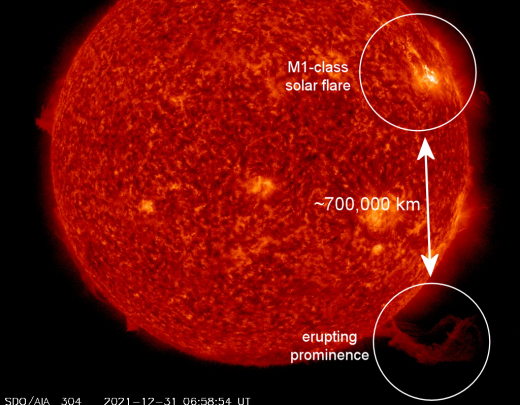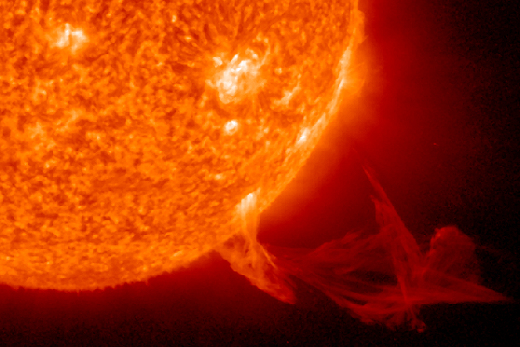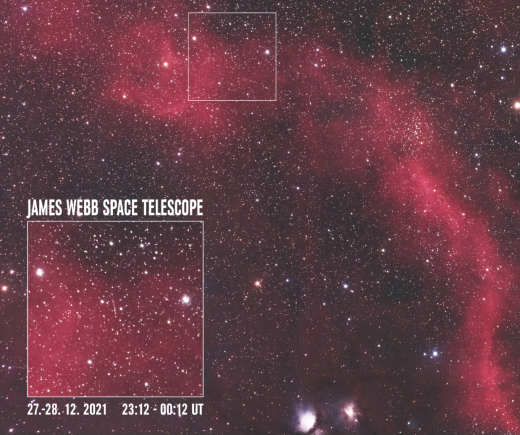Lights Over Lapland has a full catalogue of exciting adventures in Abisko National Park, Sweden! Check out our daytime and evening activities and book your adventure! | | |
GLOBAL ERUPTION ON THE SUN: Can the whole sun erupt at once? Half of it did on Dec. 31st when two explosions occured almost simultaneously 700,000 km apart. Sunspot AR2918 exploded in the sun's northern hemisphere (registering an M1-class solar flare) while an enormous prominence lifted off from the southern hemisphere: 
Coincidence? Not necessarily. NASA's Solar Dynamics Observatory discovered long ago that hemisphere-scale magnetic instabilities can ignite simultaneous explosions across the face of the sun. This appears to be such a case. The southern half of the eruption was truly awesome. NOAA's GOES-16 satellite watched the plume fly more than half a million km above the blast site: 
So far coronagraphs have detected no Earth-directed CMEs. Even when half the sun erupts, sometimes Earth is not in the strike zone. Aurora alerts: SMS Text. Realtime Space Weather Photo Gallery
Free: Spaceweather.com Newsletter AMATEUR PHOTOS OF THE JAMES WEBB SPACE TELESCOPE: NASA's next great space telescope, the James Webb (JWST), is now hurtling toward the L2 Lagrange point where it will park to explore the cosmos. On Dec. 27th, amateur astronomer Zdenek Bardon caught the JWST en route, gliding through Barnard's Loop in the constellation Orion: 
Bardon photographed the distant spacecraft (~350,000 miles away at the time of the exposure) using a 106mm refracting telescope in the Czech Republic. Stitching together a sequence of images, he created a movie of JWST transiting the red cloud of hydrogen ionized by newborn stars in the Orion Nebula. "I was assisted by two other amateur astronomers, Miroslav Grnja and Pavol Rapavy," notes Barton. The launch of the JWST on Dec. 25th was a success, but mission planners are still holding their breaths. The 10 billion dollar telescope has to execute a complex sequence of deployments--unfolding pallets, sunshields, and the telescope's mirrors themselves--before the observatory can start work. Meanwhile, amateur astronomers are tracking the telescope using coordinates provided by JPL Horizons (select the 'App' tab and enter 'JWST' as the target body). It is currently glowing like a 15th magnitude star. The brightness could increase, perhaps even abruptly, as the infrastructure of the observatory unfolds. Monitoring is encouraged. more images: from Malcolm Park using a remote telescope in San Pedro de Atacama, Chile; from Filipp Romanov using a remote observatory in Canada; from Rob Johnson of Liverpool, UK; from Gianluca Masi of Ceccano, Italy; from Efrain Morales Rivera of Aguadilla, Puerto Rico; Поделитесь этой страницей
Your opinion write your comment here on our website.....
| 

